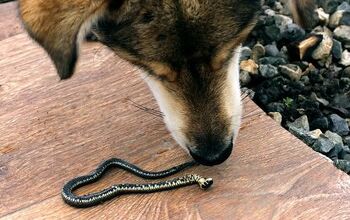Leptospirosis in Dogs: What Every Dog Owner Needs to Know

Dogs are prone to a number of different infections including one called Leptospirosis, which is caused by an infection with Leptospira bacteria. These bacteria exist all over the world in water and soil, especially in warm climates and areas with high annual rainfall. Leptospirosis can cause some serious symptoms, though they are generally not life-threatening. Keep reading to learn more about the various risk factors for this disease as well as symptoms and treatment options.
Risk Factors and Symptoms of Leptospirosis
Though Leptospira bacteria can affect a variety of animals, dogs seem to be more commonly affected than cats and other small mammals. Any dog can contract Leptospirosis through contact with the bacteria, but exposure is most likely to occur in dogs that drink from lakes, streams, and rivers as well as those that come into contact with wildlife.
The disease can be spread through bites from an infected animal, by eating infected tissue, through physical contact, or by contact with urine-contaminated food, water, soil, or bedding. It is also possible for the disease to be passed through the placenta from a mother dog to her puppies.
Related: What is Hemangiosarcoma in Dogs?
Leptospirosis is a tricky disease because the symptoms manifest differently in different dogs. In fact, some dogs that become infected with the disease don’t develop any symptoms at all. In rare occasions, however, the symptoms progress rapidly, developing into a severe illness and causing sudden death. The most common signs of leptospirosis include the following:
- Fever
- Shivering
- Muscle tenderness
- Reluctance to move
- Increased thirst
- Frequent urination
- Vomiting
- Diarrhea
- Loss of appetite
- Lethargy
- Jaundice
- Eye inflammation
Many of the symptoms of leptospirosis overlap with other conditions, so diagnosis can sometimes be tricky. Your vet will need to complete a thorough examination as well as other tests including blood tests, urine tests, radiograph and ultrasound.
Related: What Should You Know About Pythiosis in Dogs?
How is Leptospirosis Usually Treated?
Because Leptospirosis is a bacterial infection, antibiotics are the most common form of treatment. As long as the disease is caught early, the prognosis is good. There is, however, always a chance of permanent liver or kidney damage. Your dog may also need fluid therapy to remedy dehydration as well as antiemetic drugs to counteract any nausea. Fortunately, there is a vaccine available for Leptospirosis which can protect dogs for a period of 12 months with each vaccination. It is also important to note that Leptospirosa bacteria are zoonotic – this means that they can be transmitted from animals to humans. If your dog contracts Leptospirosis you need to be very careful about handling his waste and cover any open wounds you may have.
As long as it is caught early and treated aggressively, Leptospirosis does not have to become a serious problem. In fact, protecting your dog against this bacterial infection is as easy as getting an annual vaccination. As is true for all diseases, however, knowledge is your best weapon – the more you know about this condition and where your dog might get, the better you will be able to prevent him from coming into contact with the bacteria which will significantly reduce his risk for contracting the disease.

Kate Barrington is the loving owner of two cats (Bagel and Munchkin) and a noisy herd of guinea pigs. Having grown up with golden retrievers, Kate has a great deal of experience with dogs but labels herself a lover of all pets. Having received a Bachelor's degree in English, Kate has combined her love for pets and her passion for writing to create her own freelance writing business, specializing in the pet niche.
More by Kate Barrington























